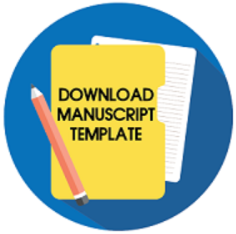Is hidrorium able to improve the students' critical thinking skills?
Downloads
Downloads
Adnyana, G. P. (2012). Keterampilan berpikir kritis dan pemahaman konsep siswa pada model siklus belajar hipotetis deduktif. Jurnal Pendidikan Dan Pengajaran, 45(3). https://doi.org/10.23887/JPPUNDIKSHA.V45I3.1833
Astuti, M. S. (2015). Peningkatan keterampilan bertanya dan hasil belajar siswa kelas 2 SDN Slungkep 03 menggunakan model Discovery Learning. Scholaria: Jurnal Pendidikan Dan Kebudayaan, 5(1), 10–23. https://ejournal.uksw.edu/scholaria/article/view/3
Astuti, Y. W., & Mustadi, A. (2014). Pengaruh penggunaan media film animasi terhadap keterampilan menulis karangan narasi siswa kelas V SD. Jurnal Prima Edukasia, 2(2), 250. https://doi.org/10.21831/jpe.v2i2.2723
Desmita, D. (2012). Psikologi perkembangan peserta didik. Rosdakarya.
Falahudin, I. (2014). Pemanfaatan media dalam pembelajaran. Jurnal Lingkar Widyaiswara, 1(4), 104–117. https://juliwi.com/published/E0104/Paper0104_104-117.pdf
Finken, M., & Ennis, R. H. (1993). Illinois critical thinking essay test. University of Illionis.
Fuad, N. M., Zubaidah, S., Mahanal, S., & Suarsini, E. (2017). Improving junior high schools' critical thinking skills based on test three different models of learning. International Journal of Instruction, 10(01), 101–116. https://doi.org/10.12973/iji.2017.1017a
Hadi, P. (2016). Konsep prototype integrated verticulture aquaponic city farming di Kampung Batik Surakarta. Seminar Nasional & Call For Paper DIES NATALIS XXXIII Universitas Islam Batik Surakarta, 131–141.
Hidayat, N. (2017). Peningkatkan kemampuan berpikir kritis dan hasil belajar siswa pada mata pelajaran matematika materi jaring-jaring bangun ruang melalui penerapan scientific approach kelas V Semester 2 di SDN 6 Dawuhan Situbondo tahun ajaran 2013/2014. JPDI (Jurnal Pendidikan Dasar Indonesia), 1(1), 7–10. https://doi.org/10.26737/jpdi.v1i1.114
Kemmis, S., McTaggart, R., & Nixon, R. (2014). The action research planner: Doing critical participatory action research. Springer . https://doi.org/10.1007/978-981-4560-67-2
Khofiyah, H. N., & Santoso, A. (2019). Pengaruh model discovery learning berbantuan media benda nyata terhadap kemampuan berpikir kritis dan pemahaman konsep IPA. Jurnal Pendidikan: Teori, Penelitian, Dan Pengembangan, 4(1), 61–67. https://doi.org/10.17977/jptpp.v4i1.11857
Kurniawati, I. D. (2018). Penerapan pembelajaran peer instruction berbantuan media pembelajaran interaktif untuk meningkatkan kemampuan berpikir kritis. Prosiding Seminar Nasional Teknologi Informasi Dan Komunikasi (SENATIK), 1(1), 120–124. http://prosiding.unipma.ac.id/index.php/SENATIK/article/view/873
Mulyasa, E. (2014). Guru dalam implementasi Kurikulum 2013. PT Remaja Rosdakarya.
Mustadi, A., Fauzani, R. A., & Rochmah, K. (2018). Landasan pendidikan sekolah dasar. UNY Press.
Nurseto, T. (2012). Membuat media pembelajaran yang menarik. Jurnal Ekonomi Dan Pendidikan, 8(1). https://doi.org/10.21831/jep.v8i1.706
Oktaviani, W. (2018). Penerapan model pembelajaran discovery learning untuk meningkatkan kemampuan berpikir kritis dan hasil belajar matematika siswa kelas 5 SD. Jurnal Basicedu, 2(2), 5–10. https://doi.org/10.31004/basicedu.v2i2.137
Pebriani, C. (2017). Pengaruh penggunaan media video terhadap motivasi dan hasil belajar kognitif pembelajaran IPA kelas V. Jurnal Prima Edukasia, 5(1), 11–21. https://doi.org/10.21831/jpe.v5i1.8461
Putra, I., Pamukas, N. A., & Rusliadi, R. (2013). Peningkatan kapasitas produksi akuakultur pada pemeliharaan ikan selais (Ompok sp) sistem aquaponik. Jurnal Perikanan Dan Kelautan, 18(1), 1–10. https://doi.org/10.31258/jpk.18.1.1-10
Rahayu, R. D. Y., Mawardi, M., & Astuti, S. (2019). Peningkatan keterampilan berpikir kritis dan hasil belajar siswa kelas 4 SD melalui model pembelajaran discovery learning. JPDI (Jurnal Pendidikan Dasar Indonesia), 4(1), 8–13. https://doi.org/10.26737/jpdi.v4i1.927
Rumini, R., & Wardani, N. S. (2016). Upaya peningkatan hasil belajar tema berbagai pekerjaan melalui model discovery learning siswa kelas 4 SDN Kutoharjo 01 Pati Kabupaten Pati semester 1 tahun ajaran 2014-2015. Scholaria: Jurnal Pendidikan Dan Kebudayaan, 6(1), 19–40.
Sanjaya, W. (2008). Strategi pembelajaran berorientasi standar proses pendidikan. Prenada Media. https://doi.org/2008
Santoso, B., & Arfianto, A. D. (2014). Sistem pengganti air berdasarkan kekeruhan dan pemberi pakan ikan pada akuarium air tawar secara otomatis berbasis mikrokontroler Atmega 16. Jurnal Ilmiah Teknologi Dan Informasi ASIA, 8(2). https://www.jurnal.stmikasia.ac.id/index.php/jitika/article/view/173
Suryansah, T., & Suwarjo, S. (2016). Pengembangan video pembelajaran untuk meningkatkan motivasi dan hasil belajar kognitif siswa kelas IV SD. Jurnal Prima Edukasia, 4(2), 209. https://doi.org/10.21831/jpe.v4i2.8393
Vikagustanti, D. A., Sudarmin, S., & Pamelasari, S. D. (2014). Pengembangan media pembelajaran monopoli IPA tema organisasi kehidupan sebagai sumber belajar untuk siswa SMP. Unnes Science Education Journal, 3(2). https://doi.org/10.15294/usej.v3i2.3330
The copyright of the received article shall be assigned to the journal as the publisher of the journal. The intended copyright includes the right to publish the article in various forms (including reprints). The journal maintains the publishing rights to the published articles.

Jurnal Prima Edukasia by http://journal.uny.ac.id/index.php/jpe/index is licensed under a Creative Commons Attribution-ShareAlike 4.0 International License.


























